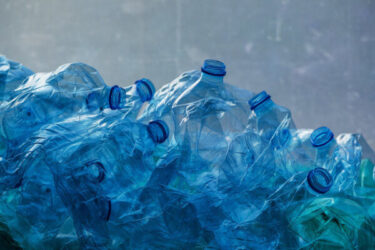
Contents
- What is the IGD Ambition Heatmap?
- Actions your organisation can implement
- How can Anthesis help?
- Contact us
Share this article
In 2021, IGD (Institute of Grocery Distribution) convened key stakeholders from across the food and consumer goods industry to tackle a shared challenge — how to make packaging systems more sustainable whilst ensuring the benefits of packaging are maintained. As a result, the ambition was created: to halve the environmental impact of all packaging systems by 2030. IGD wanted to look at all packaging materials, a range of environmental impacts, and set a common direction of travel that goes beyond legislation and industry commitments.
Anthesis began by developing the baseline for the ambition to define the industry’s position in 2019. We identified the best data sources, reviewed packaging material flows, and assessed the industry’s environmental impacts. Three different scenarios were modelled to determine the extent of change needed to reach the ambition.
We found that meeting the 2030 ambition will require at least a 20% reduction in the amount of packaging put on the market. This needs to be combined with significant environmental efficiency gains, including increased recycled content in packaging, increased material recycling rates, and decarbonising supply chains.
What is the supermarket heatmap report?
To support industry efforts in reducing packaging impacts, Anthesis produced a supermarket heatmap for IGD to highlight where the environmental impacts of packaging are most significant within an average UK supermarket.
Valpak data from 2019 was used for packaging tonnage across key product categories and applied the impacts per tonne of the four environmental indicators identified from the IGD 2030 ambition baseline analysis (climate change, water use, land use and virgin resource use).
We found that 50% of all supermarket packaging impacts are from four product categories:
- Beer/wine/spirits
- Non-alcoholic beverages
- Dairy
- Sauces
Beer/wine/spirits and non-alcoholic beverages account for a total of 33% of packaging impacts.
What actions can your organisation implement?
This new analysis can help companies to direct their actions towards the product categories with the highest packaging impacts that are most relevant to their business:
Remove:
- Remove unnecessary packaging
- Use least material required
- Adopt reuse systems
Recycle:
- Increase recycled content
- Maximise recyclability
- Increase recycling rates
Decarbonise:
- Decarbonise existing supply chains
- Move production to regions with lower carbon intensity
By taking these actions across the product categories with the highest packaging impacts, we can have the biggest impact as an industry to reduce the environmental impact of our packaging.
How can Anthesis help you?
Companies face a monumental challenge in reaching the Ambition, but we can support organisations irrespective of where they are in their packaging journey, from baseline analytics and strategy formation to action implementation and monitoring. We can tailor and adapt services including:
- Assessing your gap to ambition / goal
- Reviewing the regulatory landscape
- Holistic packaging life-cycle assessments (LCAs)
- Assessing sustainable packaging options
- Identifying hotspots for change
- Engaging with stakeholders
- Developing sustainable packaging strategies and action plans
We are the world’s leading purpose driven, digitally enabled, science-based activator. And always welcome inquiries and partnerships to drive positive change together.



